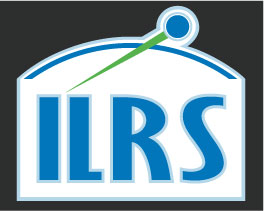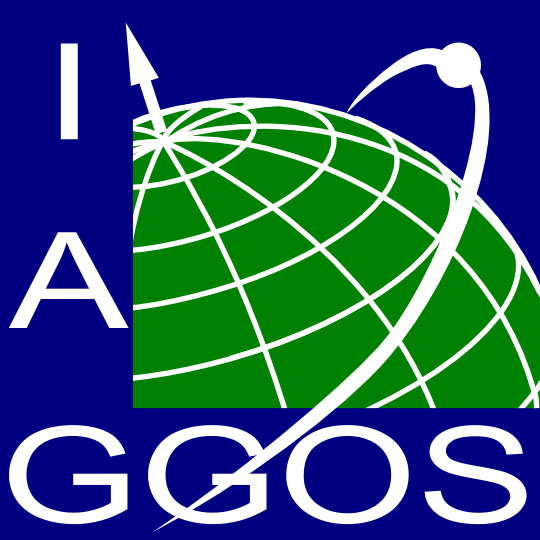Proposed SLR tracking campaign of the Etalon 1 & 2 satellites
The importance of the Etalon SLR data in monitoring Earth rotation was already recognized almost two decades ago. The ILRS ASC included Etalon data in the development of official ILRS products in early 2002. Since then there were a few periods of intense tracking to demonstrate the improvement of SLR-derived EOP with increased Etalon tracking, none of which though resulted in a dramatic improvement of the data yield of the network, although studies pointed clearly to benefits (Mathis et al., 2018). With the need for many fresh and independent EOP estimates rising due to increased requirements for accurate EOP predictions, the ILRS can make a significant contribution with a modest increase of network effort to observe these high-orbit targets more often and more consistently. As GGOS-class systems are deployed around the world, the improved efficiency and accuracy of these systems, along with increased automation, should be enough to allow for an increase of the number of observations by about 100% or even slightly more.
Simulation studies (Andritsch et al., 2017 and Andritsch et al. 2019, under review) have demonstrated that even with the lopsided network we have now, we can achieve measurable improvement of the daily EOP observations from SLR by increasing the Etalon observations even if that entails losing some of the LAGEOS tracking opportunities. The best case scenario requires the exchange of some 20% of the LAGEOS observations with Etalon tracking, resulting in tripling the Etalon data (which now hardly reach 10% of the total LAGEOS data), and in the end, improve the EOP accuracy by ∼10%. Even with a more modest increase of the Etalon tracking (only doubling the data yield), we will still reach a ∼7% improvement in the accuracy of the EOP.
Based on the data yield for the Galileo targets during the latest (3rd) LARGE campaign, we selected the group of stations that will most likely yield a significant number of well-tracked passes, although all stations are welcome to contribute. These sites are listed in the order they collected the most data during the 3rd LARGE campaign in Table 1 below. To get the most out of the new Etalon data the stations will need to follow simple general rules in picking the tracking periods of what are generally long very long passes—for near-equatorial sites on the order of 3 hours and for sites at the mid to high latitudes close to 5-6 hours. Using recent TLEs the viewing periods for the most desirable group of tracking sites are shown in Figures 1 & 2 for the Etalons and 3 & 4 for LAGEOS and LAGEOS-2. The former are given for minimum elevation angles of 30° since it is very hard for the majority of the systems to track Etalons at lower elevations. The latter are given for a 10° elevation angle since this is almost the norm for LAGEOS tracking at most sites.
In all cases we have plotted the results with the stations listed in the same order, starting from the Western US sites and proceeding eastwards around the globe. This keeps the viewing periods ordered nicely and allows to see which sites will have common viewing opportunities. It also helps identify when there may be a conflict with the LAGEOS tracking opportunities and plan how to avoid them ahead of time (weather permitting).
Generally, for this period of the year both Etalons are visible from most stations just prior and after UTC midnight and on either side of UTC noon. On the other hand, the two LAGEOS are visible several times during the day over hour-long periods. Fortuitously, over this time period the LAGEOS tracking windows fall in-between the LAGEOS-2 windows, minimizing the conflicts between the two. Stations therefore need only worry when setting up their plans, for conflicts with the Etalons.
As far as distribution of the Normal Points for each pass, we prefer the rules adopted for tracking of HEO’s (like the GNSS s/c), taking 3-4 NPs at low elevation during acquisition of the pass, another 3-4 at the closest approach (maximum elevation) and then finally, another 3-4 NPs at low elevation, prior to loss of sight as the s/c sets below the horizon. This is graphically displayed in Figure 5.
Table 1: ILRS tracking stations expected to contribute to the Etalon Campaign Project (ECP)
| Site Name | Station ID# |
|---|---|
| Zimmerwald | 7810 |
| Wettzell (WETL) | 8834 |
| Yarragadee | 7090 |
| Herstmonceux | 7840 |
| Matera | 7941 |
| Graz | 7839 |
| Grasse | 7845 |
| Pottsdam | 7841 |
| Mount Stromlo | 7825 |
| Changchun | 7237 |
| Shanghai | 7821 |
| Beijing | 7249 |
| Hartebeesthoek (HARL) | 7501 |
| Kunming | 7819 |
| Monument Peak | 7110 |
| Tahiti | 7124 |
| Greenbelt | 7105 |
| Brasilia | 7407 |
| Irkutsk | 1891 |
| Altay | 1879 |
| Komsomolsk | 1868 |
| Badary | 1890 |
| Arkhyz | 1886 |
| Baikonur | 1887 |
Figure 1: SLR tracking opportunities for the Etalon-1 satellite for February 15, 2019 (minimum elevation of 30°)
Figure 2: SLR tracking opportunities for the Etalon-2 satellite for February 15, 2019 (minimum elevation of 30°)
Figure 3: SLR tracking opportunities for the LAGEOS satellite for February 15, 2019 (minimum elevation of 10°)
Figure 4: SLR tracking opportunities for the LAGEOS-2 satellite for February 15, 2019 (minimum elevation of 10°)
Figure 5: SLR tracking mode for HEO satellite orbits (e.g. Etalon 1 & 2)
References
- Andritsch, F., A. Grahsl, R. Dach and A. Jäggi (2017) "Comparing tracking scenarios to LAGEOS and Etalon by simulating realistic SLR observations", Geophysical Research Abstracts, Vol. 19, EGU2017-16642, 2017 EGU General Assembly, Vienna, Austria.
- Andritsch, F., A. Grahsl, R. Dach, T. Schildknecht and A. Jäggi (2019) "Simulation of tracking scenarios to LAGEOS and Etalon Satellites", submitted to the Journal of Geodesy, under review.
- Bloßfeld, M., Rudenko, S., Kehm, A. et al. (2018) "Consistent estimation of geodetic parameters from SLR satellite constellation measurements", J Geod 92 (9), pp. 1003–1021, https://doi.org/10.1007/s00190-018-1166-7.




